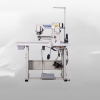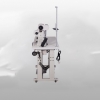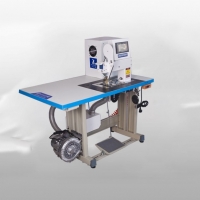2025-08-07 11:43:09
The Fifth Council Election Conference of Jiangsu Fashion Designers Association, convened in Suzhou on July 30, 2025, marked a pivotal moment for the province's garment industry. Against the backdrop of shifting global trade dynamics and evolving consumer demands, Jiangsu is reinventing itself from a manufacturing powerhouse into a hub of creative design and technological innovation.
With its robust supply chain and well-established textile clusters in cities like Suzhou, Changshu, and Wuxi, Jiangsu has long been a cornerstone of China's garment industry. Over the past five years, the province has accelerated its digital transformation, achieving a 37% increase in smart manufacturing adoption and leading the nation in flexible production capabilities. However, rising production costs, fluctuating international orders, and fierce competition from cross-border e-commerce platforms have compelled local enterprises to seek new growth engines beyond traditional manufacturing.
Design innovation has emerged as the central driver of this transformation. By integrating Jiangsu's rich cultural heritage—including traditional crafts like Yunjin brocade and Suzhou embroidery—into contemporary fashion, local designers have unlocked significant value. Collections featuring these cultural elements have seen a 210% surge in market demand, with some premium products commanding 30-50% higher prices. A notable example is a Nanjing-based designer brand that successfully debuted at Paris Fashion Week, generating over ¥10 million in sales for a single collection.
The economic impact of design extends beyond aesthetics. Data reveals a strong correlation (r=0.72) between R&D investment and revenue growth among Jiangsu's garment enterprises. Platforms like Nanjing International Fashion Week, spearheaded by newly elected association vice president Zou Zihan, have become critical bridges connecting local designers with global markets, boosting overseas orders by 18% for participating brands.
Technological adoption is reshaping production processes across the industry. Three-dimensional design tools are now used by 67% of Jiangsu's garment manufacturers, while AI-powered trend forecasting has reduced product development costs by 35%. In Suzhou, one manufacturer has leveraged these technologies to slash design cycles from two weeks to just three days, dramatically improving market responsiveness.
Looking ahead, Jiangsu faces several challenges in maintaining its competitive edge. The risk of product homogenization looms large, necessitating stronger protections for original designs. The industry must also reconcile the demands of fast fashion with growing sustainability concerns. Perhaps most pressing is the talent gap—current estimates suggest only 58% of the province's need for internationally trained designers is being met.
The Jiangsu model demonstrates how traditional manufacturing regions can reinvent themselves through cultural innovation and technological adoption. By continuing to invest in design education, intellectual property protection, and cross-border collaboration, Jiangsu is positioning itself not just as China's garment workshop, but as a global fashion innovation center—one that harmonizes centuries-old craftsmanship with cutting-edge technology to create the apparel of tomorrow.
上一页:没有了…







